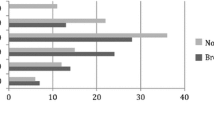Abstract
Objective: To determine whether selected socially rehabilitated former heroin addicts maintained on methadone can continue successful rehabilitation while maintained on methadone by primary care physicians rather than licensed clinics. This procedure has been termed “medical maintenance.”
Design: Cohort study with 42–111 months of follow-up.
Setting: Offices of hospital staff physicians (internists or family practitioners).
Patients: The 100 patients met extensive entry criteria, including five or more years in conventional methadone maintenance treatment; stable employment or other productive activity; verifiable financial support; and no criminal involvement, use of illegal drugs, or excessive alcohol use within three or more years.
Measurements and main results: Outcome measures used were retention in treatment, discharge for one of several reasons, lost medication incidents, and substance abuse. At one, two, and three years of treatment, 98, 95, and 85 patients, respectively, remained in medical maintenance. Cumulative proportional survival in treatment was 0.735±0.048 at five years and 0.562±0.084 at nine years. After 42–111 months, 72 patients remained in good standing; 15 patients had unfavorable discharges (11 for cocaine use, three for misuse of medication, and one for administrative violations); seven voluntarily withdrew from methadone in good standing (after receiving it for 91–24.4 years); four died; one transferred to a chronic care facility; and one voluntarily left the program.
Conclusions: Carefully selected methadone maintenance patients in medical maintenance have a high retention rate and a low incidence of substance abuse and lost medication. Voluntary withdrawal from methadone maintenance after one or two decades is possible. The authors believe that medical maintenance should be made available to appropriate patients in other localities.
Similar content being viewed by others
References
Cooper JR, Altman F, Brown BS, Czechowicz D (eds). Research on the Treatment of Narcotic Addiction: State of the Art. National Institute on Drug Abuse Treatment Research Monograph Series. Rockville, MD: National Institute on Drug Abuse, 1983.
Dole VP, Nyswander ME, Kreek MJ. Narcotic blockade. Arch Intern Med. 1966;118:304–9.
Dole VP. Implications of methadone maintenance for theories of narcotic addiction. JAMA. 1988;260:3025–9.
Kreek MJ. Using methadone effectively: achieving goals by application of laboratory, clinical, and evaluation research and by development of innovative programs. NIDA Res Monogr Ser. 1991;106:245–66.
Novick DM, Pascarelli EF, Joseph H, et al. Methadone maintenance patients in general medical practice: a preliminary report. JAMA. 1988;259:3299–302.
Novick DM, Joseph H. Medical maintenance: the treatment of chronic opiate dependence in general medical practice. J Subst Abuse Treat. 1991;8:233–9.
Murphy S, Irwin J. “Living with the dirty secret”: problems of disclosure for methadone maintenance clients. J Psychoactive Drugs. 1992;24:257–64.
Zinberg NE. The crisis in methadone maintenance. N Engl J Med. 1977;296:1000–2.
Dole VP. Hazards of process regulations: the example of methadone maintenance. JAMA. 1992;267:2234–5.
Dole VP, Joseph H. Long-term outcome of patients treated with methadone maintenance. Ann N Y Acad Sci. 1978;311:181–9.
Anglin MD, Speckart GR, Booth MW, Ryan TW. Consequences and costs of shutting off methadone. Addict Behav. 1989;14:307–26.
D’Aunno T, Vaughan TE. Variations in methadone treatment practices: results from a national study. JAMA. 1992;267:253–8.
Cooper JR. Ineffective use of psychoactive drugs: methadone treatment is no exception. JAMA. 1992;267:281–2.
Ball JC, Ross A. The Effectiveness of Methadone Maintenance Treatment. New York: Springer-Verlag, 1991.
Hser Y-I, Anglin MD, Liu Y. A survival analysis of gender and ethnic differences in responsiveness to methadone maintenance treatment. Int J Addict. 1990–1991;25:1295–315.
Levine C, Novick DM. Expanding the role of physicians in drug abuse treatment: problems and perspectives. J Clin Ethics. 1990;1:152–6.
Stimmel B. Intravenous drug use, methadone, and AIDS: ask not for whom the bell tolls. J Addict Dis. 1993;12:1–5.
Author information
Authors and Affiliations
Additional information
Supported in part by a grant from the Herbert and Nell Singer Philanthropic Fund of the Jewish Communal Fund, New York, NY, and by National Institute on Drug Abuse Treatment Research Center grant no. 1P50-DAO513.
Rights and permissions
About this article
Cite this article
Novick, D.M., Joseph, H., Salsitz, E.A. et al. Outcomes of treatment of socially rehabilitated methadone maintenance patients in physicians’ offices (medical maintenance). J Gen Intern Med 9, 127–130 (1994). https://doi.org/10.1007/BF02600025
Issue Date:
DOI: https://doi.org/10.1007/BF02600025



